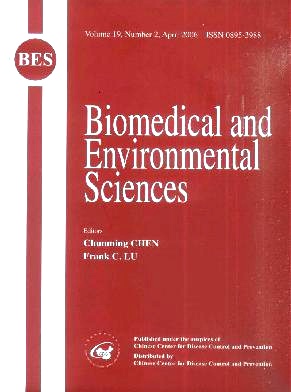Preparation of Seeding Type Immobilized Microorganisms and Their Degradation Characteristics on Di-n-Butyl Phthalate
-
Key words:
- Carrier /
- Modify /
- Seeding type immobilized microorganism /
- Biodegradation /
- DBP
Abstract: To study the preparation of seeding type immobilized microorganisms and their degradation characteristics on di-n-butyl phthalate (DBP). Methods Diatomite, clinoptilolite, silk zeolite, and coal fly ash were chosen as reserved materials and modified. Their adsorption capacity and intensity in the bacteria were determined and the best carrier was picked out. The seeding type immobilized microorganisms were prepared by the best carrier and then it degraded DBP under different primary concentration, vibration rate, pH, temperature in the presence of metal compounds. Results The adsorption capacity of the modified coal fly ash, silk zeolite, clinoptilolite and zeolite was 44.2%, 71.6%, 84.0%, and 94.4%, respectively, which was 1.66, 1.49, 1.37, and 1.16 times as high as that of their natural state. Their adsorption intensity was 72.1%, 90.5%, 90.1%,and 91.1% in turn. The modified diatomite was selected to prepare the seeding type immobilized microorganisms. When the primary DBP concentration was 100 to 500 mg/L, the DBP-degraded rate of the immobilized microorganisms could be above 80%. The degradation activity of both the dissociative and immobilized microorganisms was higher in vibration than in stillness.When pH was 6.0 to 9.0, the DBP-degraded rate of the immobilized microorganisms was above 82%, which was higher than the dissociative microorganisms. When the temperature was between 20℃ and 40℃, the DBP-degraded rate could reach 84.5% in 24 h. The metal compounds could inhibit the degradation activity of both the dissociative and immobilized microorganisms. The degradation process of the immobilized microorganisms could be described by the first-order model.Conclusion The adsorption capacity of the diatomite, clinoptilolite, silk zeolite and coal fly ash on DBP-degrading bacteria can be improved obviously after they are modified. The modified diatomite is best in terms of its adsorption capacity and intensity. Its seeding type immobilized microorganisms could degrade DBP effectively and is more adaptable to DBP load,temperature, pH than the dissociative microorganisms. The metal compounds could inhibit the activity of both the immobilized and dissociative microorganisms. The degradation reaction of the immobilized microorganisms on DBP is consistent with the first-order model.
| Citation: | LIN WANG, QI-FANG LUO, JIN-HUI ZHAO, XJAO-HE ZHANG, LI-JING HUANG. Preparation of Seeding Type Immobilized Microorganisms and Their Degradation Characteristics on Di-n-Butyl Phthalate[J]. Biomedical and Environmental Sciences, 2006, 19(2): 147-152. |







 Quick Links
Quick Links
 DownLoad:
DownLoad: